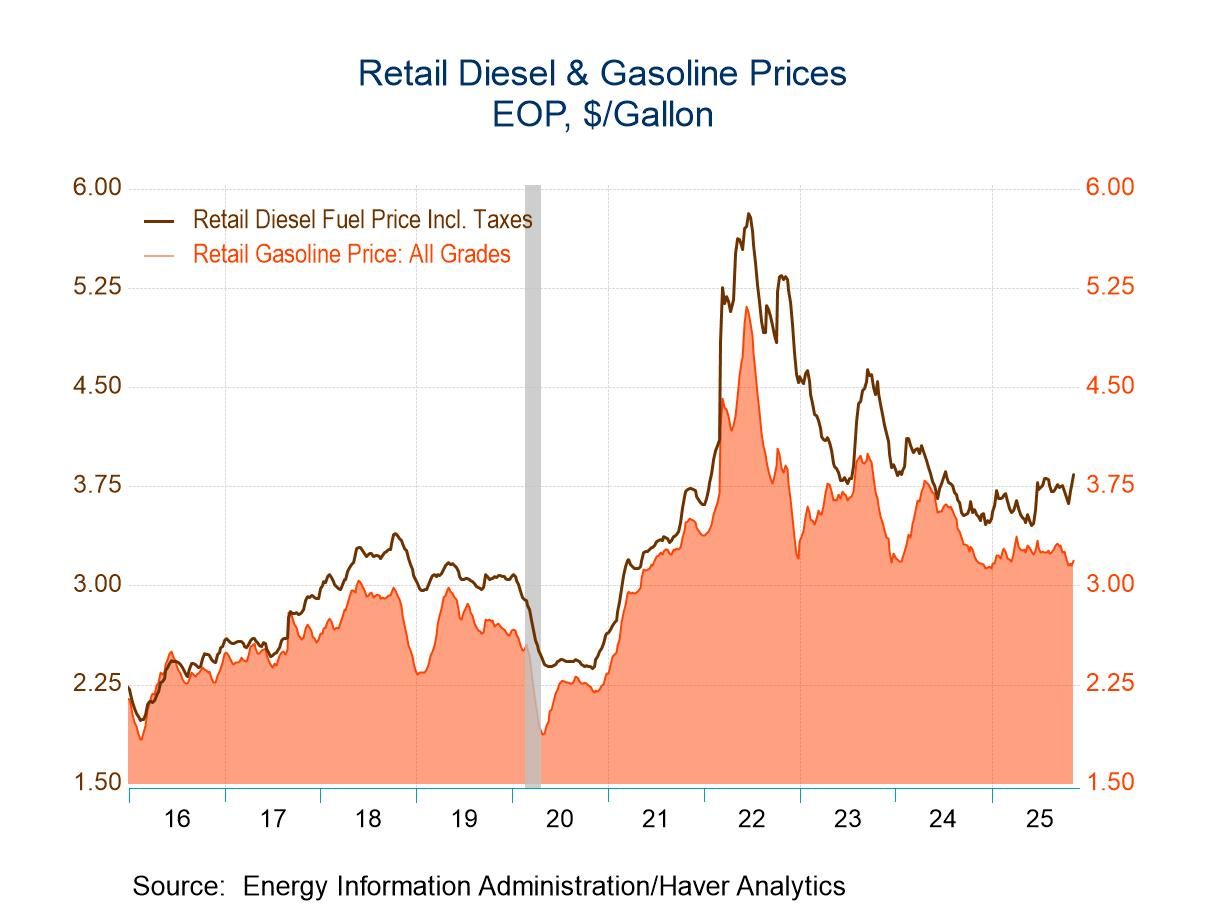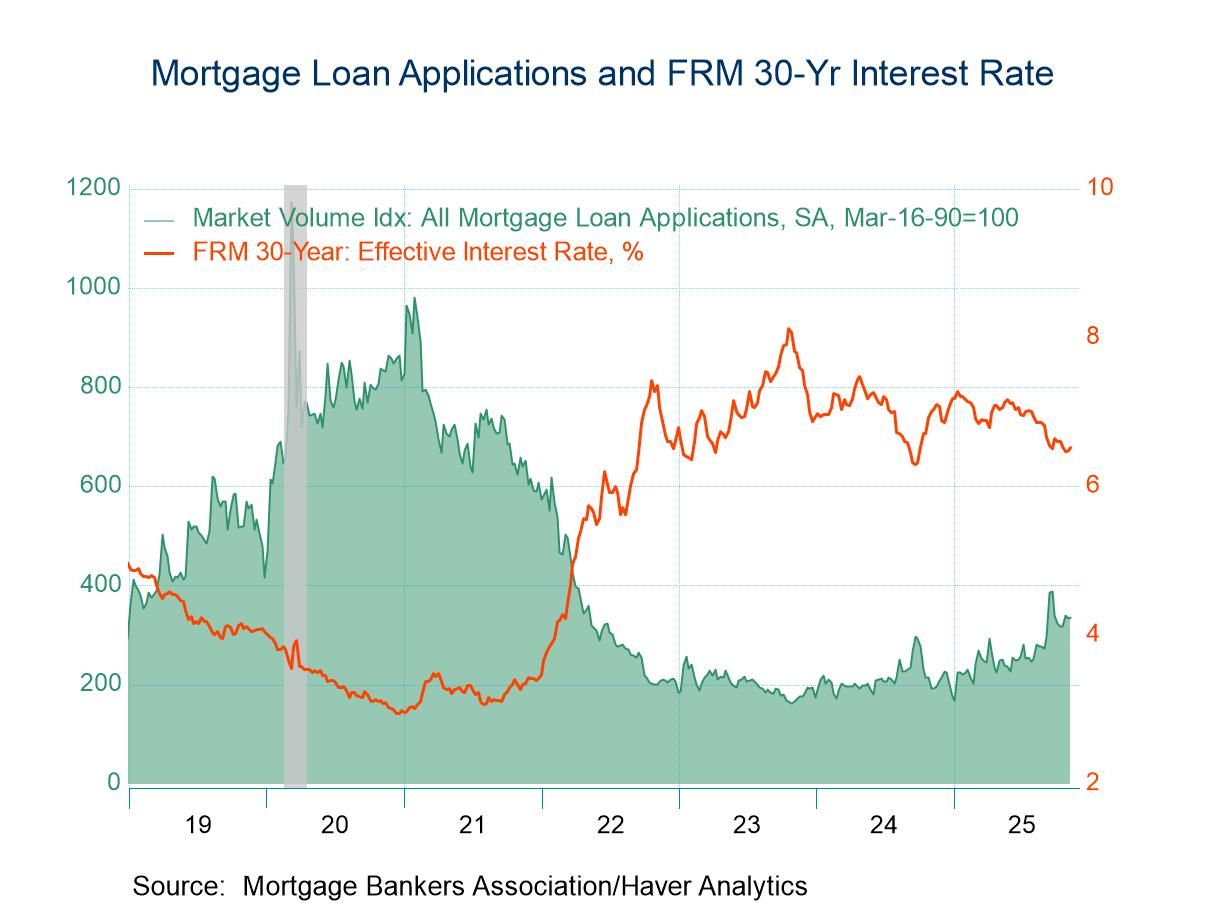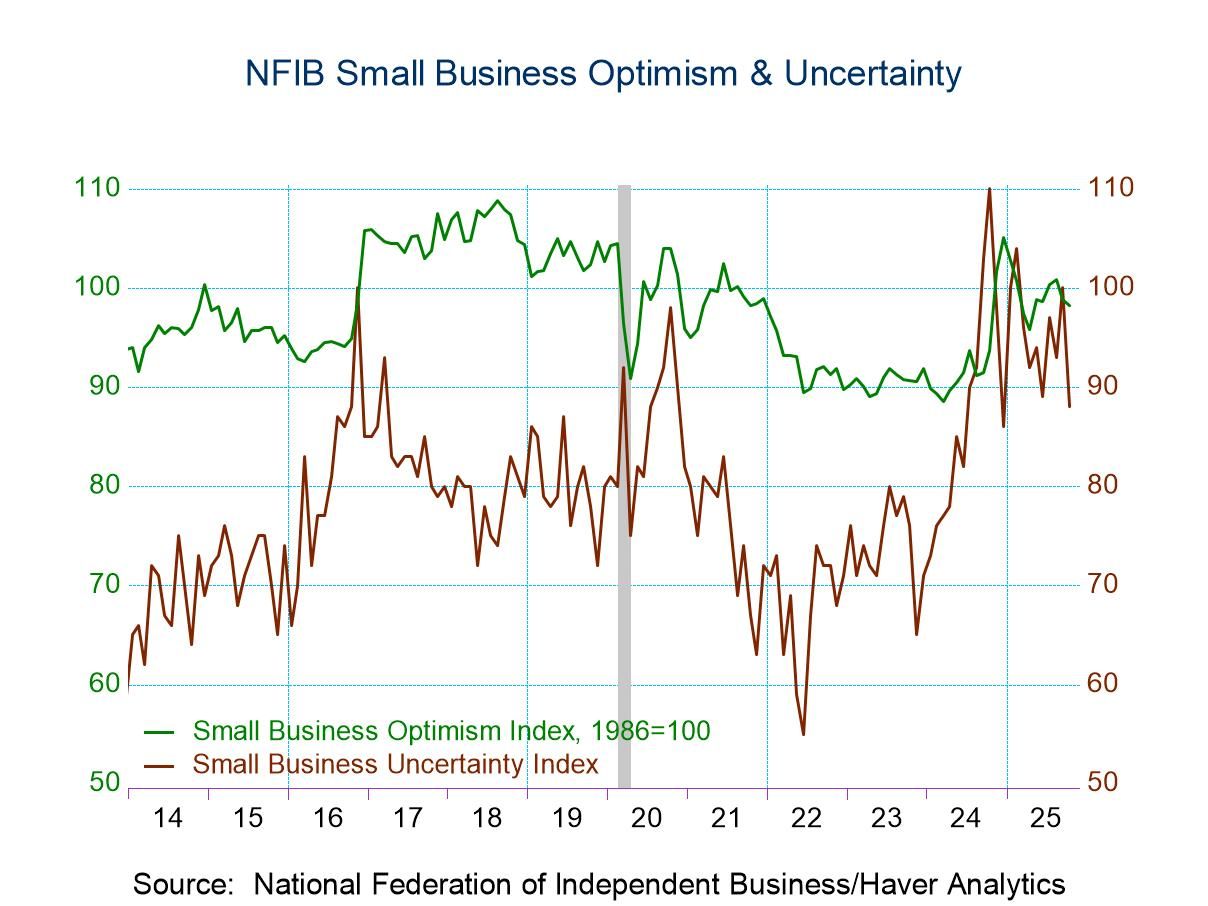U.S. New Home Sales Decline & Prices Slip in June
by:Tom Moeller
|in:Economy in Brief
Summary
- Sales fall after three months of strong increase.
- Regional sales patterns are mixed.
- Median sales price retraces much of May’s increase.


New single-family home sales fell 2.5% (+23.8% y/y) during June to 697,000 units (SAAR) from 715,000 during May, revised from 763,000, according to the U.S. Census Bureau. The Action Economics Forecast Survey expected a sales increase to 735,000. Sales remained below the peak of 1.029 million in August 2020.
By region, sales in the Northeast rose 20.6% (141.2% y/y) to 41,000 in June, but they remained below the high of 53,000 in March. Sales in the South rose 4.3% (21.4% y/y), up for the third straight month. To the downside, new home sales in the Midwest declined 28.4% (-13.1% y/y) to 53,000, the lowest level since November of last year, following two months of increase. Sales in the West weakened 13.9% (+34.9% y/y) and reversed the May gain.
The median price of a new home eased 0.5% (-4.0% y/y) to $415,400 in June following a 1.6% May rise. The price has fallen 16.4% since its October peak of $496,800. The average sales price of a new home rose 1.2% (4.8% y/y) to $494,700 after two straight months of decline. These sales price data are not seasonally adjusted.
The number of new homes on the market rose 0.7% (-3.6% y/y) to 432,000 in June and reversed May’s decline. These figures are below the 466,000 high in November 2022 but well above a low of 281,000 in October 2020. The seasonally adjusted months' supply of new homes for sale rose to 7.4 months in June. It remained down from a high of 10.1 months in July 2022 but remained well above its record low of 3.3 months in October 2020.
The median number of months a new home stayed on the market slipped to 2.7 months in June, about where it’s been since February. The reading remained up from the record low of 1.5 months in both September and October of last year but down from a high of 5.1 months in March 2021. These figures date back to January 1975.
New home sales activity and prices are available in Haver's USECON database. The consensus expectation figure from Action Economics is available in the AS1REPNA database.
The Pros and Cons of Housing Market Investors from the Federal Reserve Bank of Philadelphia is available here.


Tom Moeller
AuthorMore in Author Profile »Prior to joining Haver Analytics in 2000, Mr. Moeller worked as the Economist at Chancellor Capital Management from 1985 to 1999. There, he developed comprehensive economic forecasts and interpreted economic data for equity and fixed income portfolio managers. Also at Chancellor, Mr. Moeller worked as an equity analyst and was responsible for researching and rating companies in the economically sensitive automobile and housing industries for investment in Chancellor’s equity portfolio. Prior to joining Chancellor, Mr. Moeller was an Economist at Citibank from 1979 to 1984. He also analyzed pricing behavior in the metals industry for the Council on Wage and Price Stability in Washington, D.C. In 1999, Mr. Moeller received the award for most accurate forecast from the Forecasters' Club of New York. From 1990 to 1992 he was President of the New York Association for Business Economists. Mr. Moeller earned an M.B.A. in Finance from Fordham University, where he graduated in 1987. He holds a Bachelor of Arts in Economics from George Washington University.







 Global
Global